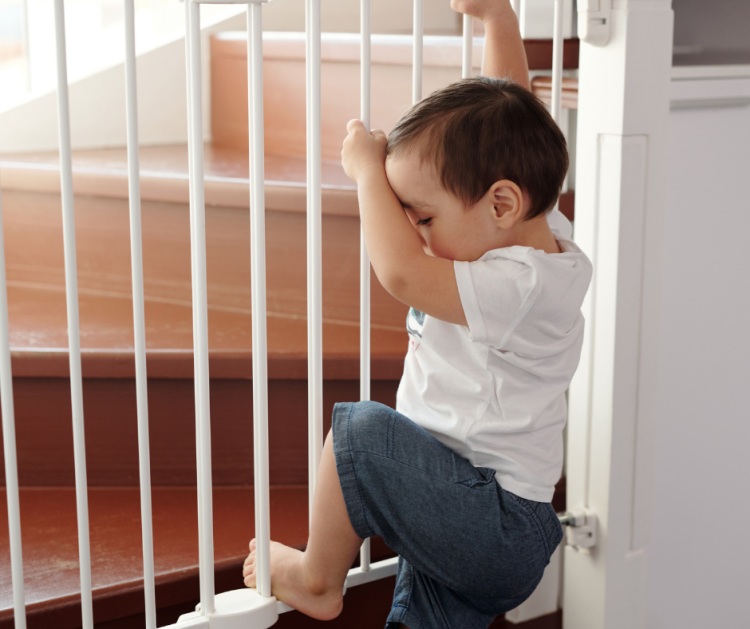Moving to a new house can be overwhelming, but even more so if you’re moving with small children in tow. While you’re unpacking, repairing and repainting, you likely want to prioritize the factor that matters most — childproofing your new home for your child safety when moving.

Here are some of the most important childproofing tasks for your new home.
1. Take Care of Electrical Safety
Electrical safety is a great place to start. After all, outlets are all over the new house and it’s one of the most important safety priorities for parents. Fortunately, this step is fairly easy once you stock up on the right supplies.
You will want to cover up your electrical outlets with a guard. These can be simple plastic plugs that fill in unused outlets, fancier outlet boxes for covering outlets that host heavier appliances, or sliding covers that let homeowners shift the covers back and forth as needed. Whatever you choose, the end result is outlets that a small child can’t stick a toy into.
Next, when you’re setting up your labyrinth of cords for entertainment centers or computer setups, consider some simple ways to deter your kids from tugging on loose cords. You can invest in a cord organizer or storage box to keep these neat, or wrap cords in sleeves that make them harder to play with. Finally, cover up your power strips, and you should be good to go.
2. Anchor Heavy Furniture For Child Safety
Now that you’re moving your dressers, TV stands and other heavy furniture into your home, make it a priority to anchor these items to the walls or floors as soon as possible. Research indicates tip-over accidents have killed about 450 children since the year 2000, making it a rare but highly tragic risk that every parent can work to prevent with some childproofing.
Purchase anti-tip kits for dressers, chests and other heavy furniture that can tip if tugged on or bumped into. These are pretty affordable and meant to be easy to DIY. Parents should be sure to anchor their TVs, which tend to be at high risk for falling over and are often quite heavy. Mounting on the wall or attaching with a kit is the best way to go.
3. Guard Access to Appliances
Around your new house, you’ll have appliances that can pose various safety risks to curious children. Make sure you take some preventative measures to make these less accessible and prevent accidental misuse.
In the kitchen, you have a few appliances to keep tabs on. It’s recommended that parents do their best to keep small kids out of the kitchen while the oven and stovetop are on, but you can also add protection by using knob covers or guards to block oven dials. Oven locks can keep kids from opening up a hot oven, too. Microwaves should be high out of reach and dishwashers should be latched and even strapped, especially when running.
The garage door is a home appliance that also requires some child safety precautions. Firstly, children should be prevented from accessing garage door openers or pressing buttons to open and close the door. Secondly, scheduling regular maintenance now will keep the door in good condition and help with peace of mind as children play outside.
Finally, the laundry room is another space parents should restrict access to when possible. Keeping detergent well out of reach is important to reduce the risk of accidental ingestion. Make sure knobs and buttons are also hard for small kids to play with, too.
4. Hide Away Toxic Substances
Speaking of laundry detergent, where are you going to store your cleaning supplies, medications and other substances that can be harmful for kids? When you unpack them, make sure to think about long-term storage that will be safe for your family.
Parents can child proof access to cabinets and cupboards with potentially harmful chemicals. You should also consider keeping things in high cabinets versus near the ground, on the off chance you leave a door open accidentally. Medication should be secured high up as well, keeping an eye on whether a curious kid could easily climb up to reach this storage space.
5. Stay On Top of Moving Cleanup
Last but not least, moving can be a messy, overwhelming process for busy parents. You’ll need to take care to sort out important tasks and take care of cleanup as needed. Slips, trips and choking hazards are always risks for small children, especially when the house is still being arranged and decorated.
Keep a close eye on hand tools, screws and nails if you’re putting furniture together. Watch out for the risks of loose packing peanuts and plastic when unpacking cardboard boxes. And try to plan out labor-intensive tasks, like breaking down cardboard boxes, for when your kids go to bed — using box cutters and ripping cardboard looks fun for small children, but it can be risky, too.
Make Child Proofing Your New Home a Priority
You have a lot on your mind when moving to a new house. Make sure child safety remains a top priority. Electrical safety, safe storage and anchoring furniture once it has moved into place will go a long way toward keeping children safe and keeping parents’ sanity in check.
We hope you found this blog post How to Childproof Your New Home For Safety, useful. Be sure to check out our post Tips to Choose a Reliable Electrical Service Provider for more great tips!
Have Experience in the Moving Industry? Want an Additional Income Stream? Work With All Around Moving!
If you are interested in applying your skills in the moving industry, check out our program to earn extra income. Partner with us and we’ll help you profit. Click here to learn more.





